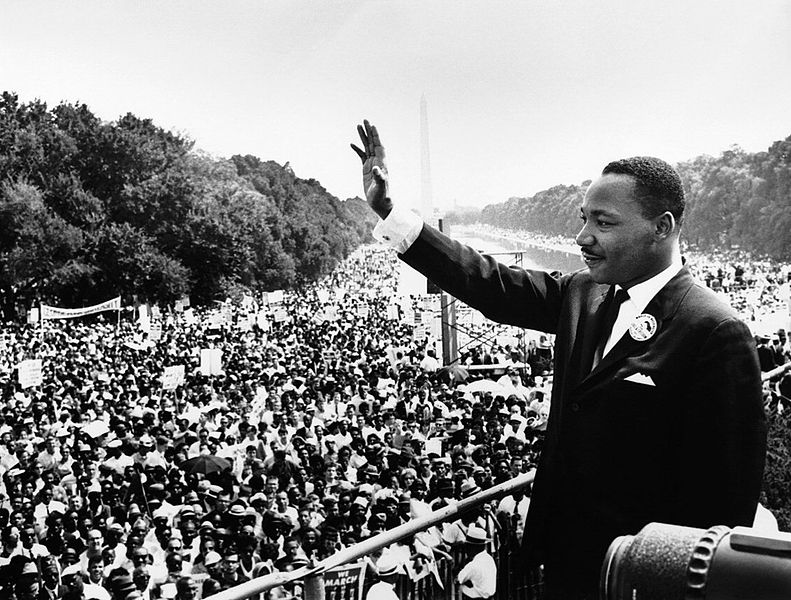by S.A. McMillan

Photo courtesy of U.S. federal government and Wikimedia Commons
While the idea of immortalizing an important figure with a holiday is a testament to their importance on our society, it can also cloud their achievements. With Dr. Martin Luther King Jr., one might remember the famous “I Have a Dream Speech” and the bus boycott or his ideas for non-violent civil disobedience. In our times, more than half a century later, it can be hard to believe that anyone involved in politics could possibly be all they say they are.
In 1956, Martin Luther King Jr. was leading the bus boycott in Birmingham, Alabama. He carried a handgun and he and his family were protected by armed guards. This is far from the theory of non-violence that King is known for now.
Bayard Rustin became involved with King to instruct him in the ways of non-violent civil disobedience, which he had learned in India from leaders in the Gandhian Movement. Soon the armed guards were gone and so was King’s handgun.
The bus boycott, as history shows, was a success. Rustin and King continued their relationship by co-founding the Southern Christian Leaders Conference, an organization begun to end all forms of segregation, but no more than three years later Bayard Rustin was asked to leave the SCLC.
This was 1960 and the country was highly pressurized by the Red Scare. Rustin’s politics edged towards socialism and this made him dangerous enough without the fact that he was openly gay. One has to take a moment to let this sink in—it was 1960, before the Civil Rights Act had been enacted and Rustin was a minority among minorities. He was seen as a moral hindrance more than anything else and not just by the FBI who already had files on King and Rustin but also to the NAACP who did not want a gay communist seen as the face of the Civil Rights Movement.
Senator Strom Thurman produced a picture of Rustin talking to King while King was in a bathtub, and this must have proved too much. King was encouraged to let Rustin go. The March on Washington was in the early stages of being planned. Despite King’s urges to keep Rustin on as part of the movement, the many prejudices of the time prevailed and King had to ask Rustin to leave but insisted that he lead in organizing the March on Washington, where King gave his “I Have a Dream” speech.
In the famous speech King preaches, “We will be able to work together, to pray together, to struggle together, to go to jail together, to stand up for freedom together, knowing that we will be free one day.” King was well aware at this point that this struggle was far from over on many fronts.
In the years following the March on Washington, the Civil Rights Act was passed as well as the Voting Rights Act. In 1968, King was assassinated and cut his activism short, but Rustin continued working, aligning himself with the labor movement and in the late sixties going to Vietnam during the war to aid refugees. Late in his life he continued his work with the black labor movements and also gay rights. Rustin died in 1987 in Manhattan.
The irony of a black man basically being asked to leave the Civil Rights Movement because of other prejudices cannot be lost. King’s willingness to abide by his own principal that “all men are created equal” is as important in hindsight as anything else King accomplished in his life.
The film “Brother Outsider: The Life of Bayard Rustin” is streaming on Netflix.

